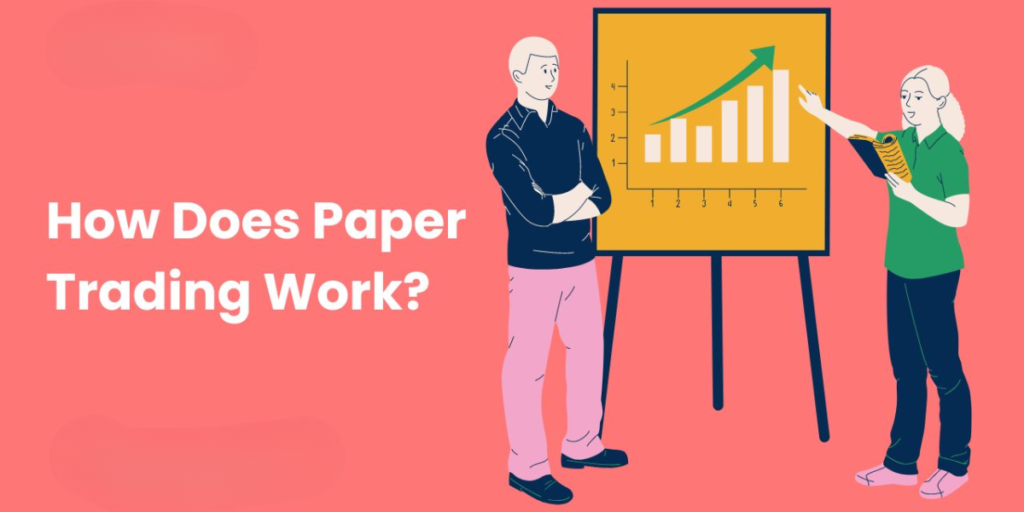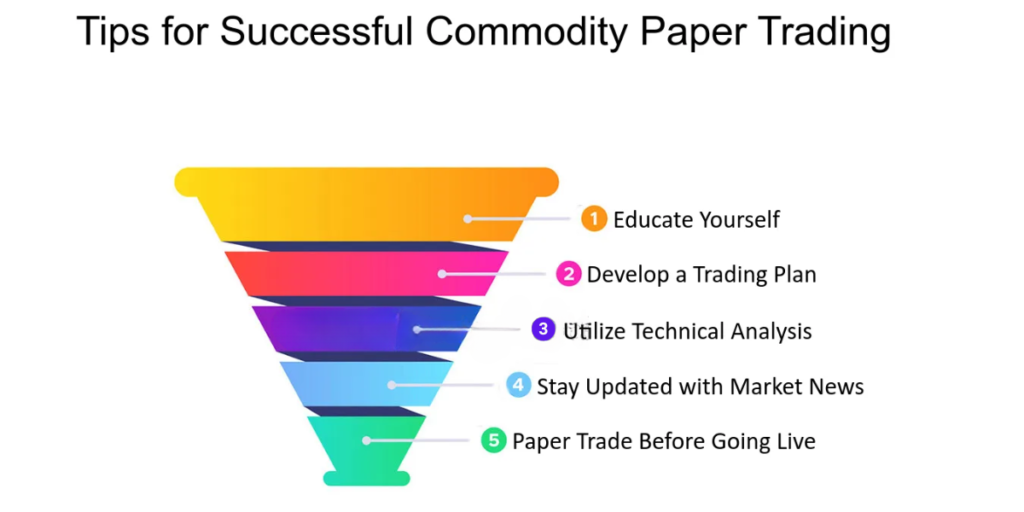What’s the first thing that comes to your mind when you think about trading stocks or other financial instruments? In most cases, it is the risk of losing money. Real-world trading can be a scary place if you are learning the game. But what if you could learn the ropes, test your strategies, and get comfortable with the process without having to place a single dollar at risk in the first place? This is where paper trading can fill its void.
In the blog post, we explore the basics of paper trading, how paper trading works, and why this probably is the right platform for newbies to get started with.
Table of Contents
1. What is Paper Trading?
Paper trading, otherwise known as virtual trading or simulated trading, refers to the process of trading financial assets in a simulated account. This means that you will practice buying and selling stocks, bonds, commodities, or other financial instruments with fake money in a real-world setting.
Simple in concept, it means trading as though you are in a live market; however, since you are not using any real money, there are no financial risks. One of the ways to learn how markets work is to understand how trades are placed and develop strategies without fearing that your hard-earned money is at risk.
2. How Does Paper Trading Work?

Almost all online brokers and finance websites offer their users paper trading accounts. Here is a step-by-step explanation of how paper trading usually works:
A. Create a Paper Trading Account: Most trading platforms, upon signing up or as an additional feature, allow one to create a paper trading account. Log in and, in most cases, the platform will give you some amount of virtual money for trading.
B. Browse the Platform: Take a little time to get familiar with the look and feel of the platform. It can save you the hassle of searching where the market data is, how to find or look for a stock, and how to place a trade.
C. Research and Pick Your Stocks: Just like you would in live trading, you will need to decide on which stocks, or other vehicles, you’ll be trading. Do your research on companies, use charts, and with all types of analyses at your command, do your best in picking stocks.
D. Place Your Trades: Once you are ready, place trades. In this stage, you will determine how many shares you want to purchase or sell and at what price. These trades would then be executed on the platform as if they were happening in a live market.
E. Monitor Your Performance: Watch how your virtual portfolio performs once you place your trades. Observe how the market is affecting your various holdings and adjust your strategies accordingly.
F. Review and Learn: One of the most prominent advantages of paper trading is reviewing performance with no financial repercussions attributed to it. Look back at your trades, analyze what went well and what didn’t, and use this information to improve your strategy.
Read More :- Intraday Trading: Effective Techniques for Success
3. Why Paper Trading is Important for Beginners?
A. Risk-Free Learning: The most obvious advantage is that you can learn without losing money. Trading can be very unpredictable, and beginners are especially prone to making mistakes. With paper trading, mistakes become valuable lessons rather than expensive losses.
B. Understand the Market Dynamics: Financial markets can be very complex at times. You can practice and see how different market events, news, or economic indicators affect the prices of stocks and their changes in a paper trade.
C. Testing Strategies: Whether it be day trading, swing trading, or long-term investing, paper trading helps you try out various strategies to find what works for you. You can try various ways and find a style that suits your goals and risk tolerance.
D. Building Confidence: The more practice you get in, the easier the actual trading process will become. Paper trading is instrumental in building your confidence so that when you are ready to begin trading for real, you’ll be more prepared and less anxious.
4. Tips on How to Paper Trade Effectively

It’s a paper trade, so it won’t matter—treat it like real trading if you really want to get the most from this. There is no place for rash decisions since there isn’t any kind of financial risk involved with this type of account.
A. Keep a trading journal: The trades you have made, what compelled you to make such decisions, and the results should be included here. This is one practice that will let you realize your behavior relating to trading and help in its improvement over time.
B. Set Realistic Goals: You shouldn’t think that you will double your virtual account overnight. Set up real goals and focus on steady, gradual growth. Keep in mind, the aim is to learn and improve; it’s not to “win” in the short term.
C. Understand Market Conditions: Market conditions may shift quickly, and being able to understand these shifts is key to successful trading. A wider understanding of broader economic news, market trends, and individual stock movements will ensure that you are able to keep a comprehensive picture of what happens.
D. Test the Waters in Real Trading Gradually: Once you have confidence in your paper trading, then you can switch over to real trading gradually. Testing the waters by starting small and increasing your amount only when you have gained some experience is always good.
5. Common Mistakes to Avoid
A. Overtrading: If there is no real money to lose, it’s easy to overtrade. It can further lead to bad habits and a misperception of how trading actually works. Be very careful about how often you trade and try to make thoughtful, calculated decisions.
B. Ignoring Emotions: Real trading implies real emotions. One becomes conscious of the fact that one can’t create the exact sentiments one gets when one is paper trading with the money on risk. Still, by being mindful of your emotions and practicing good decision-making, you will be better equipped against the psychological parameters of real trading.
C. Not Taking It Seriously: This may be the case with some beginners who are usually casual while doing paper trading because no actual money is involved. The skills and knowledge you acquire during this period, however, are worth more than their weight in gold. Take your paper trading exercises seriously, and you will be better prepared when you trade for real.
Read More:- Top Trading Types to Invest Money and Earn Profit
Conclusion
Paper trading is an excellent entrance point to trading in every way. It is a no-risk strategy that offers the perfect setting to learn, test trading theories, and enhance confidence. After you understand the process of paper trading and deal with it like a serious avenue of learning, you finally develop skills that can help in techniques for actual trading. Every successful trader began somewhere, and paper trading just might be your perfect starting point.
So, whether you are totally fresh when it comes to trading or just looking to finesse your strategies, paper trade. It’s a great way to get your feet wet without the fear of losing money, so you can focus on learning and growing as a trader. Happy trading!
